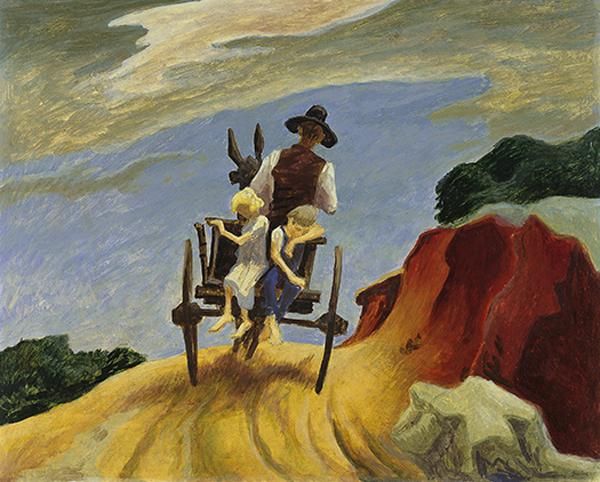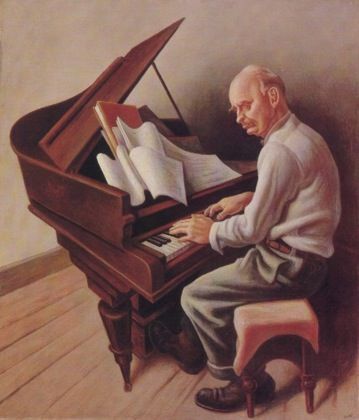Thomas Hart Benton (1889-1975)
Get a Thomas Hart Benton (1889-1975) Certificate of Authenticity for your painting (COA) for your Thomas Hart Benton (1889-1975) drawing.
For all your Thomas Hart Benton (1889-1975) artworks you need a Certificate of Authenticity (COA) in order to sell, to insure or to donate for a tax deduction.
Getting a Thomas Hart Benton (1889-1975) Certificate of Authenticity (COA) is easy. Just send us photos and dimensions and tell us what you know about the origin or history of your Thomas Hart Benton (1889-1975) painting or drawing.
If you want to sell your Thomas Hart Benton (1889-1975) painting or drawing use our selling services. We offer Thomas Hart Benton (1889-1975) selling help, selling advice, private treaty sales and full brokerage.
We have been authenticating Thomas Hart Benton (1889-1975) and issuing certificates of authenticity since 2002. We are recognized Thomas Hart Benton (1889-1975) experts and Thomas Hart Benton (1889-1975) certified appraisers. We issue COAs and appraisals for all Thomas Hart Benton (1889-1975) artworks.
Our Thomas Hart Benton (1889-1975) paintings and drawings authentications are accepted and respected worldwide.
Each COA is backed by in-depth research and analysis authentication reports.
The Thomas Hart Benton (1889-1975) certificates of authenticity we issue are based on solid, reliable and fully referenced art investigations, authentication research, analytical work and forensic studies.
We are available to examine your Thomas Hart Benton (1889-1975) painting or drawing anywhere in the world.
You will generally receive your certificates of authenticity and authentication report within two weeks. Some complicated cases with difficult to research Thomas Hart Benton (1889-1975) paintings or drawings take longer.
Our clients include Thomas Hart Benton (1889-1975) collectors, investors, tax authorities, insurance adjusters, appraisers, valuers, auctioneers, Federal agencies and many law firms.
We perform Thomas Hart Benton art authentication, appraisal, certificates of authenticity (COA), analysis, research, scientific tests, full art authentications. We will help you sell your Thomas Hart Benton or we will sell it for you.
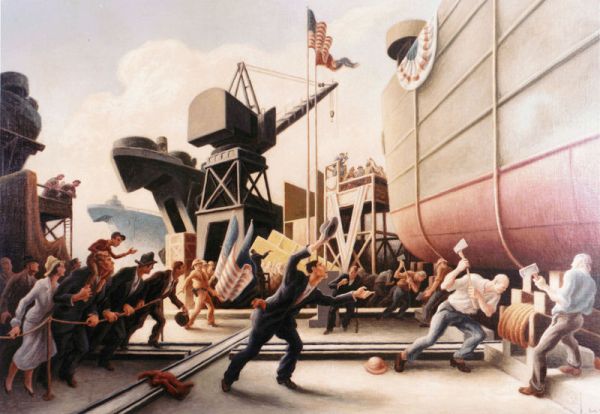
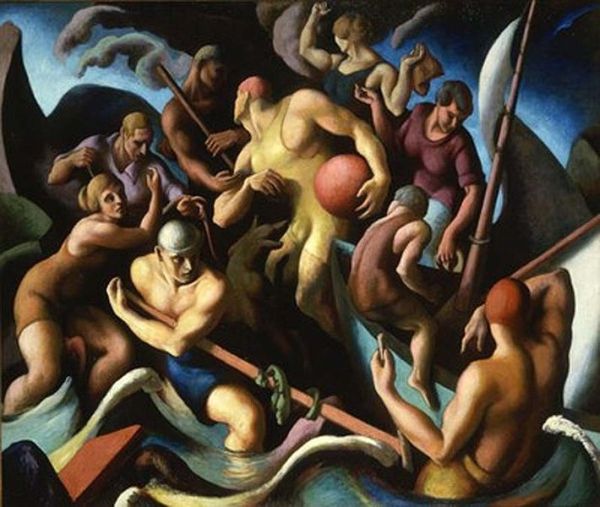
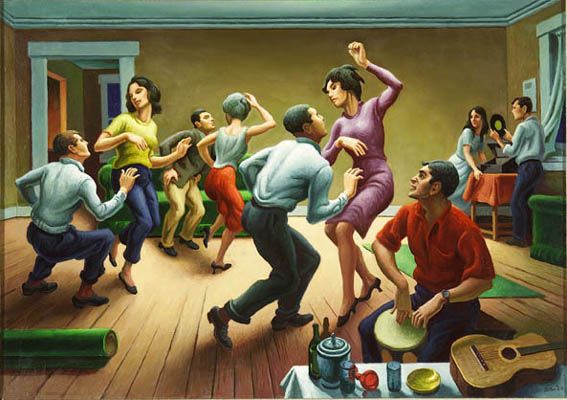
Thomas Hart Benton was an American painter and muralist of the Regionalist art movement. Benton was born in Neosho, Missouri to a family of politicians and powerbrokers. Benton was named after his great-uncle Thomas Hart Bent, one of the first United States Senators from Missouri.
Though Benton’s family home was in Missouri, the family spent much time in Washington DC. Benton rebelled against his family’s wishes fro him to follow a political career path and chose to follow his dreams of becoming an artist. Benton’s first exposure to art was through his job as a cartoonist for the Joplin American newspaper in Missouri.
In 1907 Benton left Missouri and enrolled at the Art Institute of Chicago. After two years of study in Chicago Benton moved to Europe to study at the reputable Académie Julian in Paris. At the Académie Julian, Benton befriended artists from the United States and Mexico, including Diego Rivera and Stanton Macdonals-Wright, who heavily influenced Benton’s style.
In 1913 Benton returned to New York City until being called to serve in the US Navy during World War I. Benton was stationed in Norfolk, Virginia as a wartime artist. Benton’s task was to draw camouflaged ships, making sure that the camouflage patterns were adequately applied.
During the 1920s Benton returned to New York City to resume working as a fine art artist. Benton defined himself as an “enemy of modernism” and promoted the Regionalist movement. Benton received several commissions, including his El Greco-inspired murals for the New School for Social Research in New York City.
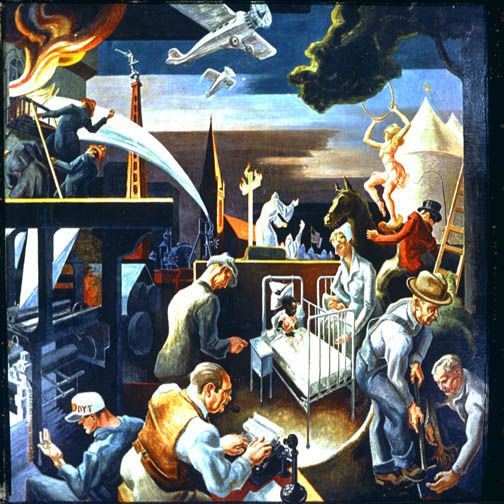
In 1932 Benton painted murals depicting life in the state of Indiana for the 1933 Century of Progress Exhibition in Chicago, Illinois. The Indiana Murals created a great amount of controversy for including Ku Klux Klan members in full dress. The mural panels are currently displayed at Indiana University in Bloomington, Indiana.
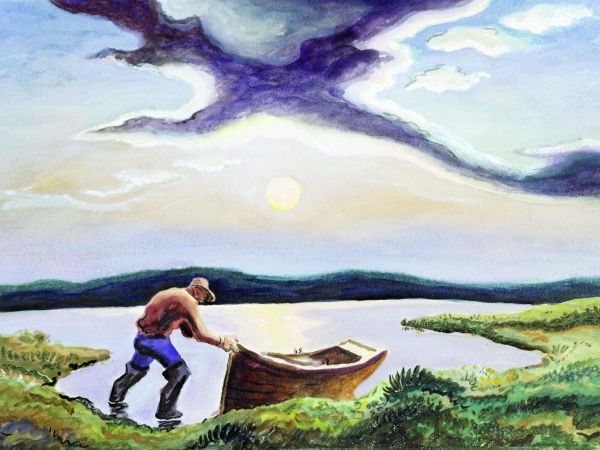
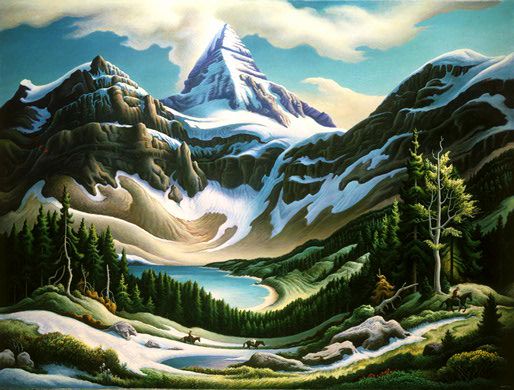

Benton eventually returned to his home state of Missouri, where he painted the mural “A Social History of Missouri” for the Missouri State Capitol in Jefferson City. Like the Indiana Murals, the Missouri mural caused controversy for its depiction of slavery and outlaws like Jesse James. Despite public criticism, Benton was generally revered for his work, and was offered a teaching position at the Kansas City Art Institute.
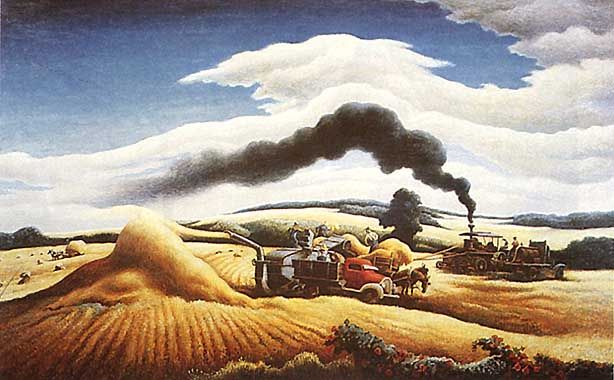
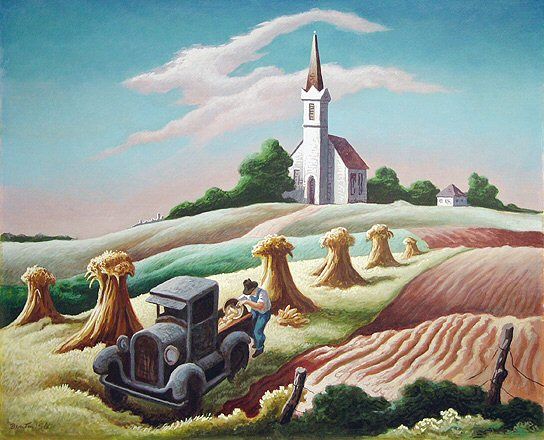
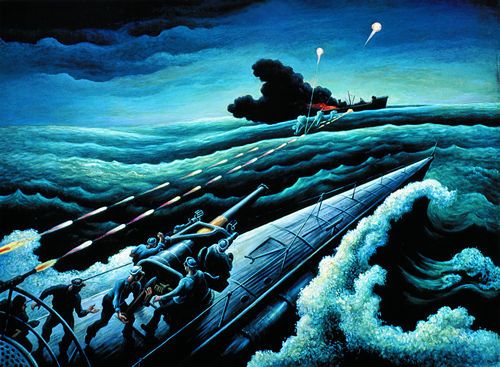
Living in the Midwest, it was easier for Benton to access rural America. Benton persevered at painting small-town America, in its beauty and despair. In 1937 Benton published his autobiography, An Artist in America, describing his philosophy as a painter.
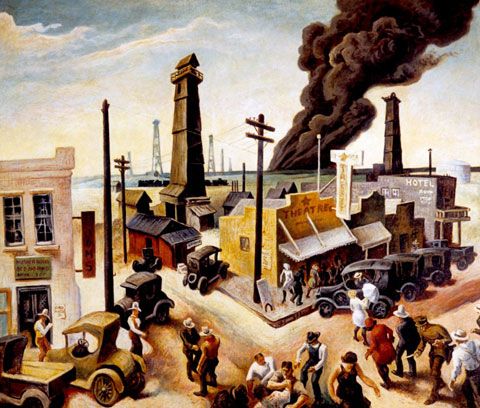
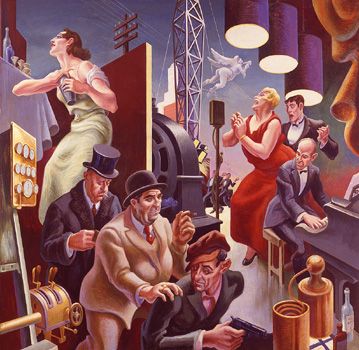
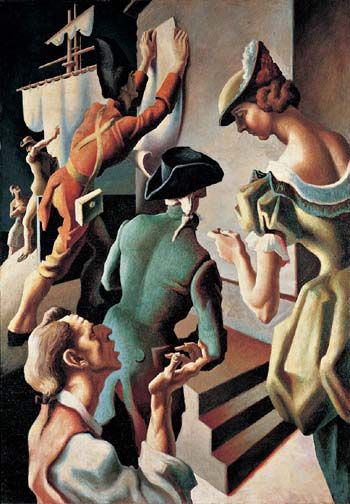
As a teacher in New York City and Kansas City, Benton taught and influenced numerous artists including Jackson Pollock, Charles Pollock, Charles Banks Wilson, Frederic James, Lamar Dodd, Reginald Marsh, Robert MacDonald Graham and Charles Green Shaw among others.
